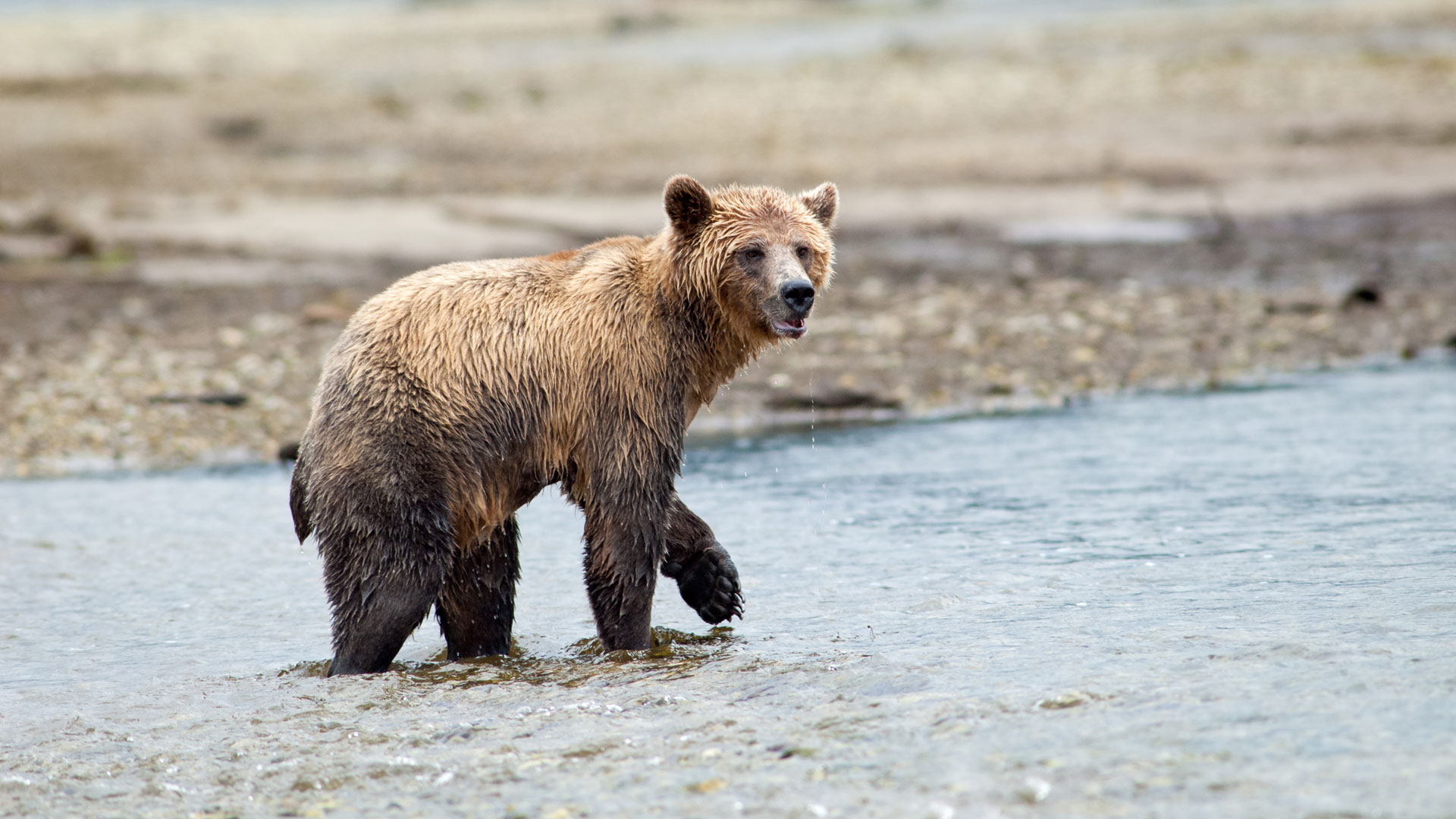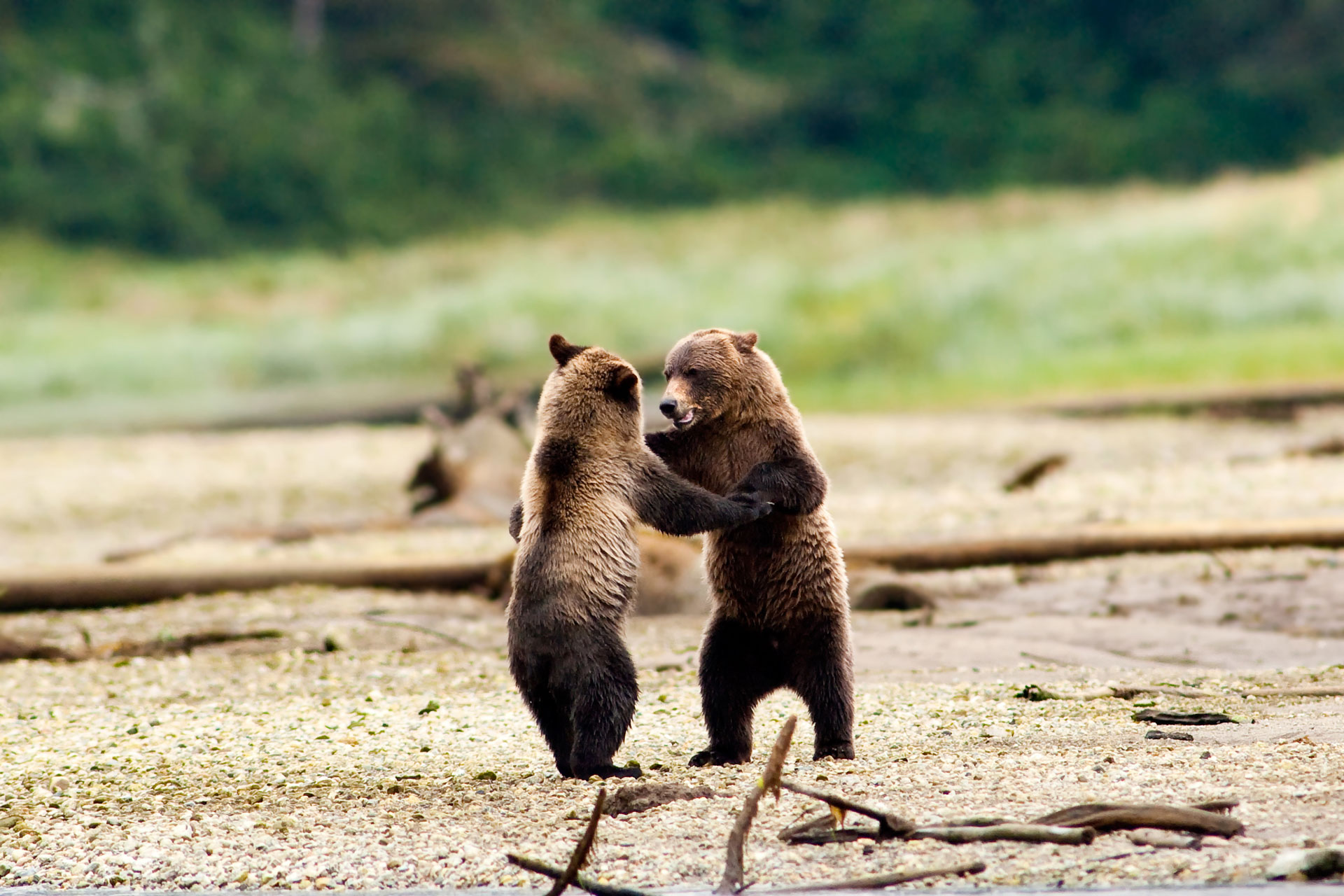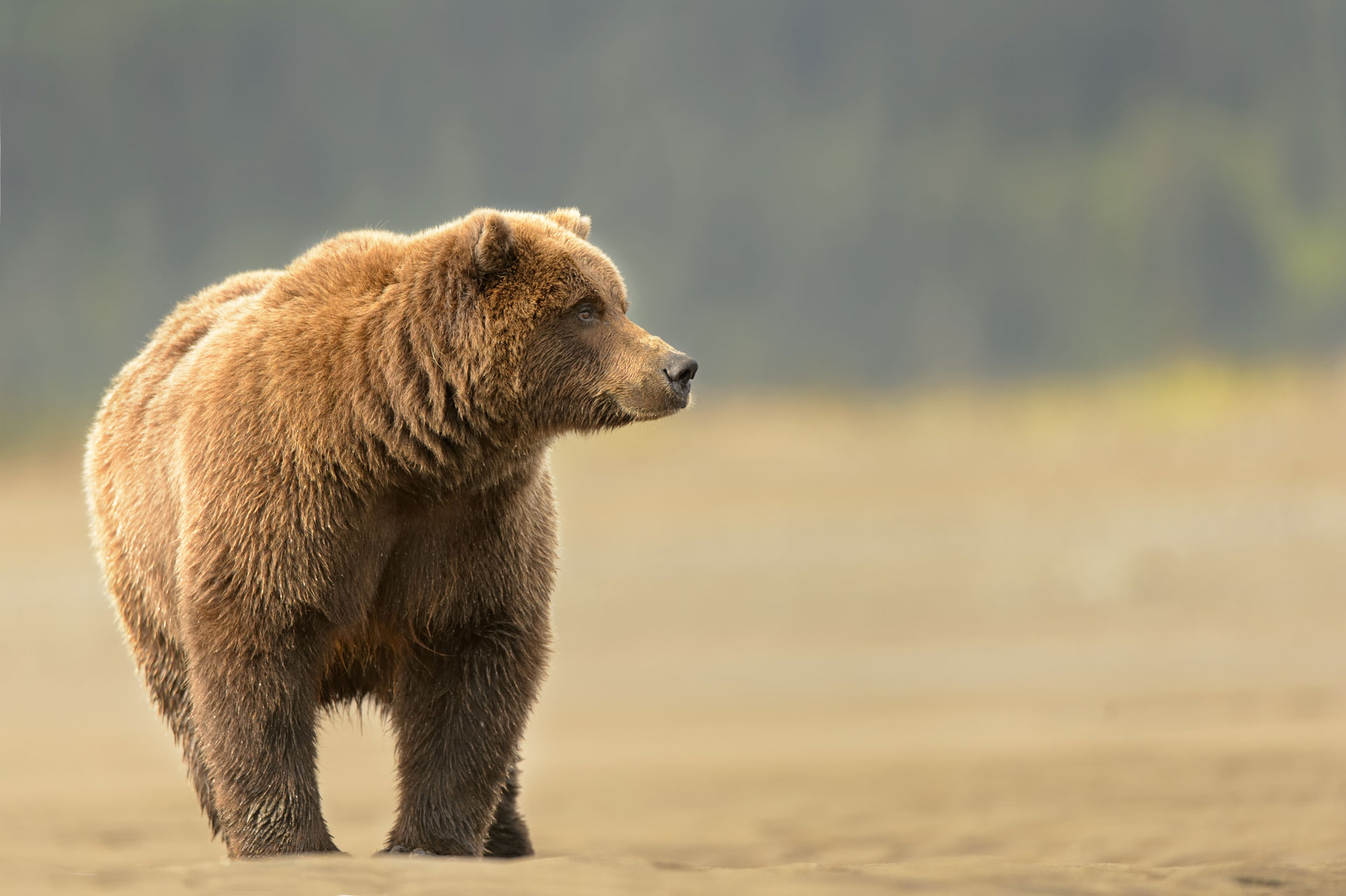Repopulating and coexisting with North America’s endangered majestic mammals.
Thought of as a symbolic species of the wild, an estimated 50,000 grizzly bears freely roamed North America between the Pacific Coast and the Great Plains in the early 1800s. Their lands, uninhabited by humans aside from local tribes, spanned vast forests, woodlands, alpine meadows and prairies. Each spring, these mammals emerged from their winter dens, tending to their young while foraging nature’s bounty of abundantly lush resources. Momma bears looked after playful cubs who somersaulted over one another across grassy fields; siblings sat idly, plucking and snacking on tart huckleberries from surrounding branches; and adults gathered nearby, knee-deep in flowing rivers, to snatch fresh salmon dinners.
These majestic mammals, distinguished by their rounded ears, tall statures and muscle-filled shoulder humps, are among North America’s largest omnivores. Although their natural predators included wolves, mountain lions and adult males of their own kind, until the early 1800s, sickness and disease were the primary dangers lurking within grizzly bear territory.
Story continues after a quick message from our sponsor below.
Throughout the next century, grizzly bear populations began to diminish due to the arrival of pioneers, rapid settlement expansions and human-caused mortalities. According to the U.S. Fish and Wildlife Service, 37 separate grizzly bear populations remained in 1922. By 1975, 31 of those were extinct, and fewer than 1,000 grizzly bears remained south of the Canadian border. The extreme decline and concern for the future of the grizzly bear led to a “threatened” listing status for the lower 48 states under the Endangered Species Act, determined by the U.S. Fish and Wildlife Service.
Today, conservation efforts take place in five established recovery zones. In North Idaho’s own back yard are the Selkirk and Cabinet- Yaak mountains. The first of which reaches into Washington and Canada and is currently home to an estimated 80 grizzly bears, while the second stretches into Montana and Canada and is home to an estimated 50 grizzly bears. Other zones include North Cascades in Washington, North Continental Divide in Montana and Canada, and Greater Yellowstone which shares the land of Wyoming, Montana and Idaho, respectively.
“If you’re listed under [the]Endangered Species Act, it doesn’t matter if you’re endangered or threatened, you have full protection of the [act],” says Wayne Wakkinen, Idaho Fish & Game’s Panhandle region wildlife manager. He addresses the common misnomer between the “endangered” and “threatened” status designations, which are often times misunderstood to equate to different funding levels.
Funding for federally supervised, state-run initiatives is allocated by congress to help states finance recovery efforts for species listed under the ESA. “As a state, we decide the priority of how that pot of money should be distributed,” says Wakkinen. And when neighboring states, like Washington and Montana, share in the recovery efforts, the states’ cost-share responsibilities with the federal government decrease. “It’s an incentive for the states to work together,” he says.

>> Shifting Tides and Shared Efforts
In the 1990s, human-caused mortality, including poaching, accidental shooting and road infrastructure, was the primary challenge for grizzly bear recovery efforts. However, Wakkinen explains that the challenges have since shifted to the perimeter of the ecosystems.
“There’s a lot of opportunity and a lot of groups that have been involved in grizzly bear recovery, from a nonprofit and nongovernmental end of things,” says Wakkinen.
Organizations like the Yellowstone to Yukon Conservation Initiative, The Nature Conservancy of Idaho, Nature Conservancy of Canada and Vital Ground, among other local and national operations, are run by passionate environmental and wildlife advocates who work to fill the gaps in resources, funding, support and education initiatives.
“Vital Ground is working toward a regional vision where all of the ecosystems have some connection with the others,” explains Ryan Lutey, executive director of Vital Ground. The nonprofit organization works to acquire land around recovery zones through purchases and conservation easements with willing landowners to ensure property use does not conflict with conservation values.
“There are a growing number of examples where grizzlies have been documented in the areas between the separate recovery zones and their associated ecosystems,” says Lutey. “And Vital Ground wants to secure a landscape that permanently allows for those movements.”
“Land acquisition and easements have been a big focus for [nongovernmental organizations],” says Dustin Miller, administrator for the Idaho Governor’s Office of Species Conservation. “However, these groups and many others also continue to focus on education and outreach efforts to landowners and others to support coexistence with grizzly bears.”
Outreach campaigns aim to educate residents and visitors of the difference between black bears and grizzly bears in an effort to eliminate hunting mortalities due to mistaken identity. These initiatives also draw awareness to bear-safe practices, like refraining from leaving corn outside for the deer and sunflower seeds for the birds, as bears love these foods. Compost piles and barbeque pits are discouraged and securing trash cans is recommended. For hikers and campers, proper food and trash storage is key, and pepper spray is always, always a necessity.
Other efforts include working with companies located near recovery zones to instate bear-safe procedures and safeguards for the management of waste and sanitation. Capabilities have greatly advanced over the years, providing more accurate monitoring of grizzly bear behaviors. Wakkinen says GPS collars help identify bears who make long-distance movements between ecosystems. Likewise, non-invasive DNA-collection methods help track travels – on one occasion, grizzly DNA was found in the Cabinet-Yaak recovery zone whose lineage could be traced back to British Columbia’s Selkirk area.

>> Coexisting with the Wild
“The ESA has certainly helped curtail excessive mortality on grizzly bears in the Selkirk and Cabinet- Yaak ecosystem, and it has helped put these bears on a trajectory towards recovery,” says Miller. “The intent of the ESA is to recover listed species to a point where the protections of the act are no longer necessary.” At that point the species wellbeing becomes the state’s responsibility, without federal oversight.
Progress towards population recovery is a slow and steady road, and involves the commitment of many organizations as well as the local community. As of June 2017, the U.S. Fish and Wildlife Service announced the removal of Yellowstone’s grizzly bears from the endangered species list, thanks to conservation efforts. The population rebounded from an estimated 136 grizzly bears in 1975 to nearly 700 today.
“Because of the northwestern United States’ tremendous public lands legacy, opportunities still exist to maintain habitat connectivity between grizzly recovery ecosystems,” says Lutey. “This is the only place in the country where conservation on this scale remains possible.”
Creating a sanctuary for grizzly bears across recovery zones is not the intent, though road density may restrict travel through these areas. Instead, the intent is to increase the population and ensure humans are educated about grizzly bears in order to safely coexist.
“Grizzly bears have a very low reproductive rate, so recovery of this species certainly takes time,” says Miller. “But we have seen growth in the Selkirk and Cabinet-Yaak populations over the years due to the maintenance of on-the-ground conservation actions and because of local support.”
Even when grizzly bears are taken off of the endangered list in these recovery zones, efforts will remain vital to ensure these populations are stabilized long-term. And Lutey lists the bear’s ability to adapt to climate change among important necessities for recovery continuation.
Wakkinen relishes in the extraordinary fact that here in the Pacific Northwest, “[We] still have habitat that’s wild enough to support grizzly bears. It’s kind of a special place.” N
By Kimberly Gunning
As Featured In: Winter/Spring 2018



